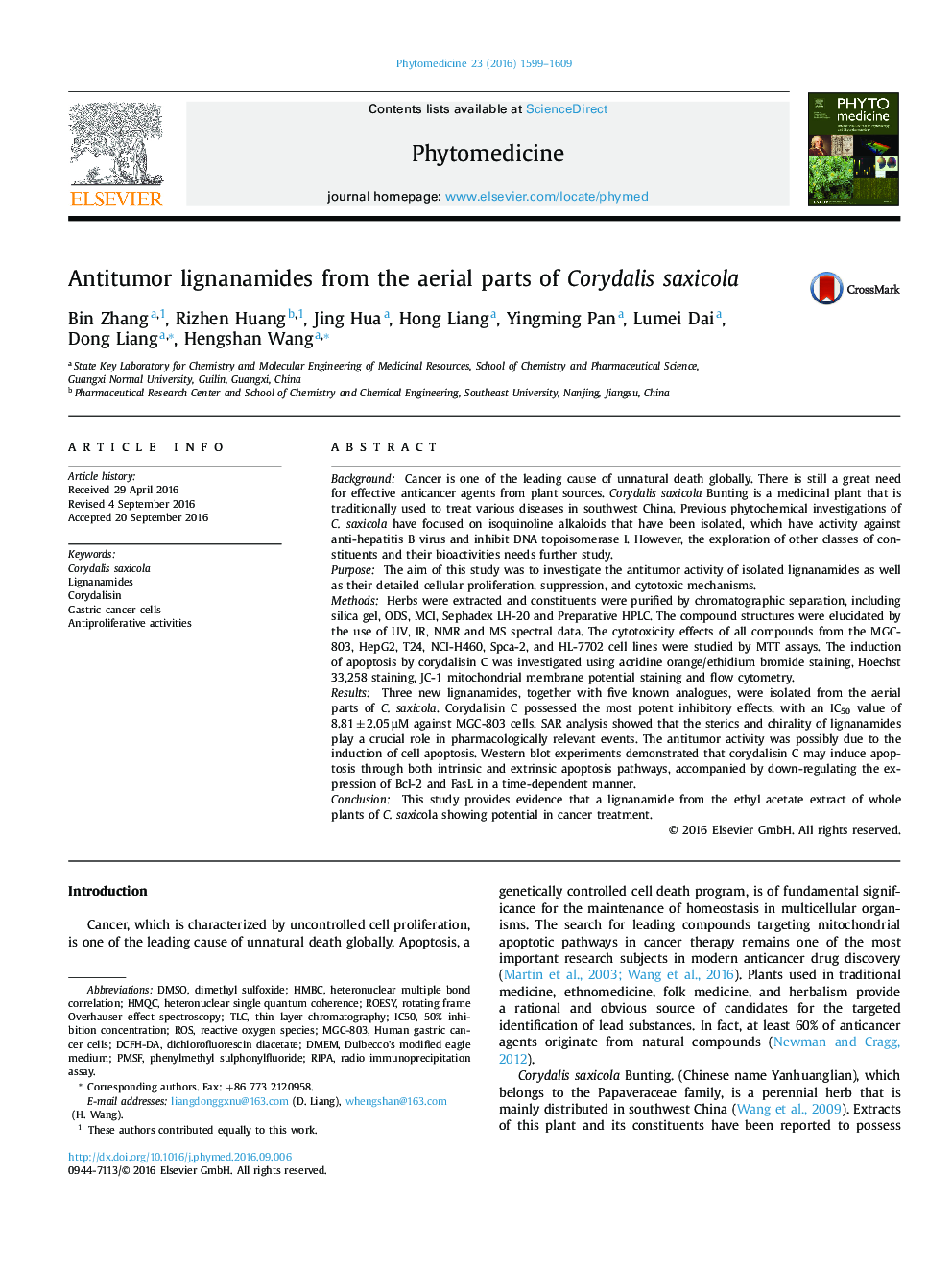| کد مقاله | کد نشریه | سال انتشار | مقاله انگلیسی | نسخه تمام متن |
|---|---|---|---|---|
| 5549463 | 1402874 | 2016 | 11 صفحه PDF | دانلود رایگان |

BackgroundCancer is one of the leading cause of unnatural death globally. There is still a great need for effective anticancer agents from plant sources. Corydalis saxicola Bunting is a medicinal plant that is traditionally used to treat various diseases in southwest China. Previous phytochemical investigations of C. saxicola have focused on isoquinoline alkaloids that have been isolated, which have activity against anti-hepatitis B virus and inhibit DNA topoisomerase I. However, the exploration of other classes of constituents and their bioactivities needs further study.PurposeThe aim of this study was to investigate the antitumor activity of isolated lignanamides as well as their detailed cellular proliferation, suppression, and cytotoxic mechanisms.MethodsHerbs were extracted and constituents were purified by chromatographic separation, including silica gel, ODS, MCI, Sephadex LH-20 and Preparative HPLC. The compound structures were elucidated by the use of UV, IR, NMR and MS spectral data. The cytotoxicity effects of all compounds from the MGC-803, HepG2, T24, NCI-H460, Spca-2, and HL-7702 cell lines were studied by MTT assays. The induction of apoptosis by corydalisin C was investigated using acridine orange/ethidium bromide staining, Hoechst 33,258 staining, JC-1 mitochondrial membrane potential staining and flow cytometry.ResultsThree new lignanamides, together with five known analogues, were isolated from the aerial parts of C. saxicola. Corydalisin C possessed the most potent inhibitory effects, with an IC50 value of 8.81â±â2.05 µM against MGC-803 cells. SAR analysis showed that the sterics and chirality of lignanamides play a crucial role in pharmacologically relevant events. The antitumor activity was possibly due to the induction of cell apoptosis. Western blot experiments demonstrated that corydalisin C may induce apoptosis through both intrinsic and extrinsic apoptosis pathways, accompanied by down-regulating the expression of Bcl-2 and FasL in a time-dependent manner.ConclusionThis study provides evidence that a lignanamide from the ethyl acetate extract of whole plants of C. saxicola showing potential in cancer treatment.
208
Journal: Phytomedicine - Volume 23, Issue 13, 1 December 2016, Pages 1599-1609